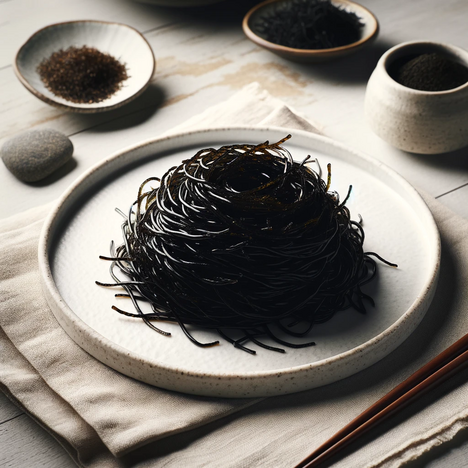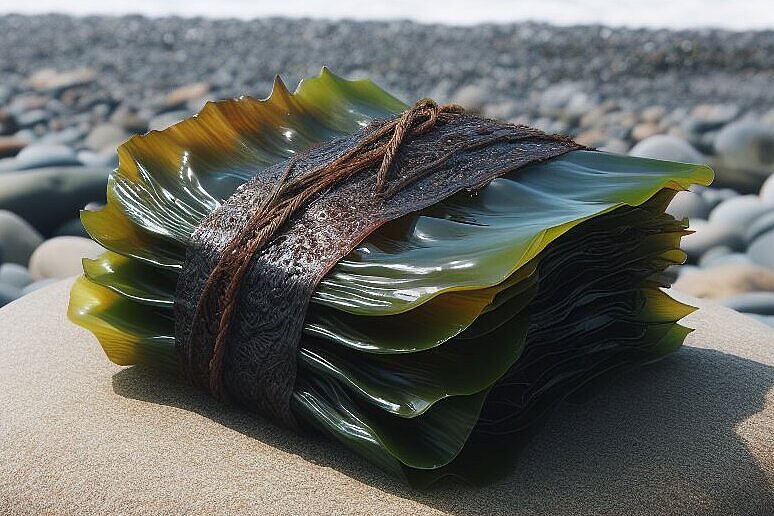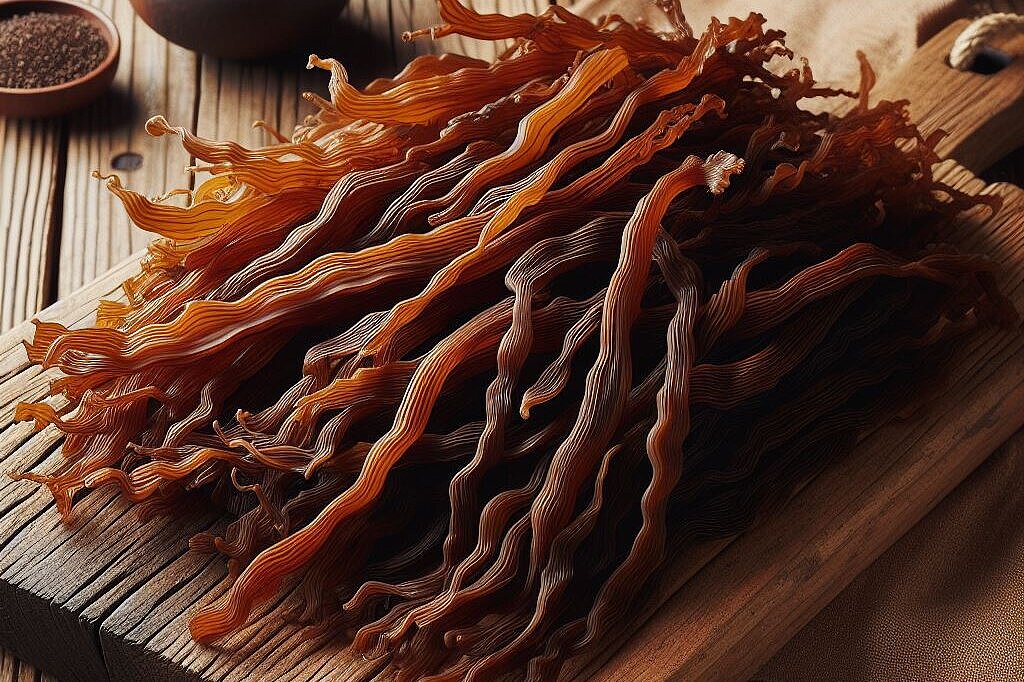Hijiki

What is Hijiki?
Hijiki (Sargassum fusiforme) is a seaweed known for its long, thread-like fronds that can grow up to several meters in length. After harvesting, hijiki is dried and then forms small, hard pieces that need to be soaked before consumption. This algae is rich in fiber, minerals (especially calcium and iron) and various vitamins.
A nutritional powerhouse
Hijiki is characterized by a high content of essential minerals and vitamins. It is particularly rich in calcium, which makes it an excellent supplement for bone health. Iron, magnesium and iodine are also present in high concentrations, making Hijiki a beneficial ingredient for your dog's overall health and well-being.
Benefits of Hijiki for dogs
Promotion of bone health
The high calcium content in Hijiki helps to build and maintain strong bones and teeth, which is especially important for growing puppies and older dogs.
Supporting digestion
As a source of fiber, Hijiki can help regulate the digestive system, prevent constipation and promote healthy intestinal flora.
Improving skin and coat health
The nutrients contained in Hijiki, especially iodine and omega-3 fatty acids, can help improve skin health and contribute to a shiny, healthy coat.
Strengthening the immune system
Hijiki's antioxidant properties, along with its vitamin content, can boost the immune system and help your dog's body fight off infections.
Potential disadvantages and considerations
Heavy metal exposure
Hijiki has been linked to higher levels of heavy metals, particularly arsenic. Long-term exposure can cause health problems. It is important to feed hijiki in moderation and to choose products of high quality and safety.
Allergic reactions
Although rare, it is possible for some dogs to have an allergic reaction to hijiki or other seaweeds. Watch your dog carefully when feeding him hijiki for the first time.
Proper soaking and preparation
Hijiki must be properly soaked and prepared before feeding to improve digestibility and minimize potential risks from contaminants.
A balancing act
Hijiki offers a range of benefits for your dog's health, from supporting bone and digestive health to promoting a healthy coat. However, as with any supplement, it's important to moderate the quantity and pay attention to the quality of the product, particularly with regard to heavy metal contamination. Responsible use of hijiki in your dog's diet can help reap the many health benefits while minimizing potential risks.
If you notice any signs of hypersensitivity or poisoning in your dog, you should see your vet immediately. We are not a substitute for a vet, but we try to be as accurate as possible. Every dog reacts differently and we recommend you get a second opinion or consult your vet if in doubt.
Stay healthy and take good care of your four-legged friend!😊
Similar to Hijiki
Kombu is a brown algae that belongs to the genus Laminaria. It grows in cold seas and forms long, leathery leaves with finger-like appendages. Kombu is mainly cultivated and harvested in Japan,...
Wakame (Undaria pinnatifida) is a marine brown algae species that was originally native to the coasts of East Asia. However, due to its invasive nature, it has now spread to many other seas. Wakame...
Nori is a seaweed that grows in shallow waters. It is harvested, washed, pressed into thin sheets and dried. Nori has a dark green color and a mild taste. It is rich in protein, fiber, minerals and...
Arame (Eisenia bicyclis) is a dark brown seaweed that is mainly found in the cold waters around Japan. It is characterized by its fine, thread-like strands, which develop a sweetish note after...



